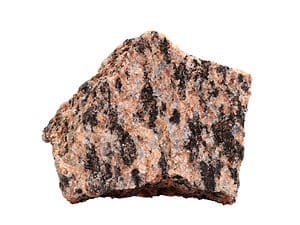Gold, one of the most precious and remarkable metals in the world, has an exquisite quality. It never rusts and retains its shine. Since around 700 BC, humans made the first gold coins. And throughout history, this radiant metal has held great importance in our civilization. Over the thousands of years of human history, humans have turned this metal into beautiful jewelry and works of art. But have you ever wondered about the origins of gold? How exactly is gold formed in the first place?
In this article, we will discuss the fascinating process of how gold is formed. We will unveil the mysterious secrets behind the creation of this extraordinary metal.
What is Gold?
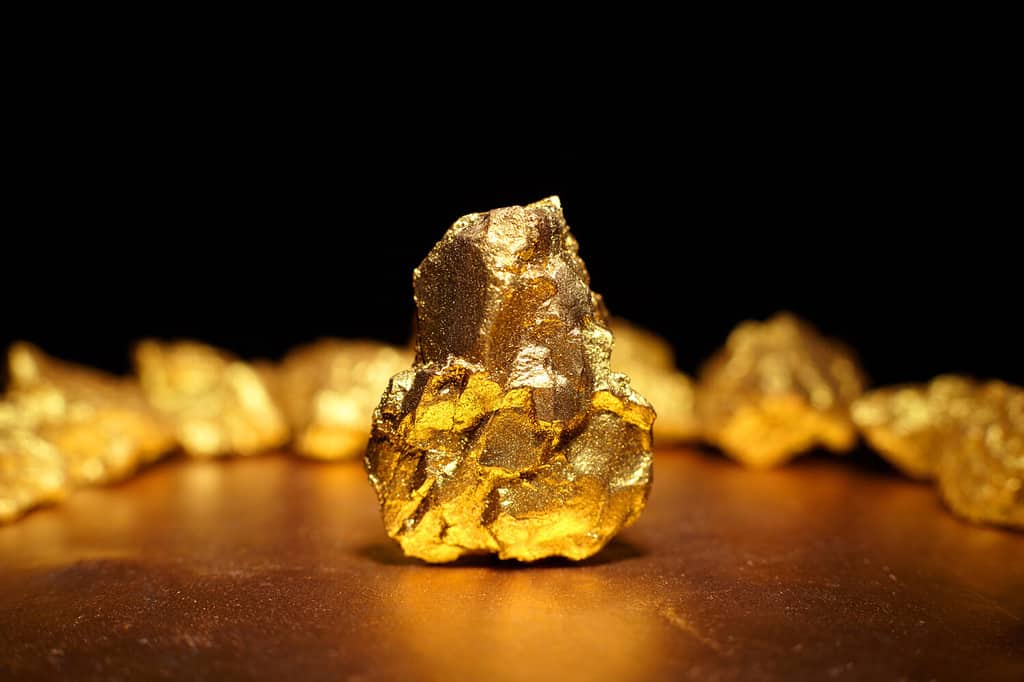
Gold is a precious metal that is dense, yellow, and shiny.
©Roman Bodnarchuk/Shutterstock.com
Before we dive into the science behind it all, first, what is gold? Gold is a one-of-a-kind chemical element known for its dense, beautiful yellow appearance. It has several extraordinary qualities that have given it immense value throughout the history of mankind.
Notably, gold’s attractive color and brilliant shine make it highly valuable. Moreover, its durability renders it virtually indestructible, while its malleability allows it to be shaped easily. This makes it perfect for jewelry and other uses.
Among all metals, the history of gold stands unparalleled due to its long-standing perceived value. Contributing to its value, gold is relatively rare compared to other elements. This precious metal also holds significant cultural and historical value. Throughout history, humans have used gold as a symbol of wealth, power, and prestige. Archaeologists have found and discovered gold artifacts and jewelry in ancient tombs, temples, and royal treasures.
Chemical Properties
| Property | Value |
|---|---|
| Symbol | Au |
| Atomic number | 79 |
| Relative atomic mass | 196.97 |
| Melting point | 1947.52°F, 1064.18°C, 1337.33 K |
| Boiling point | 5137°F, 2836°C, 3109 K |
| Block | d |
| Density (g cm−3) | 19.3 |
| State at 20°C | Solid |
| Electron configuration | [Xe] 4f145d106s1 |
| CAS number | 7440-57-5 |
| Key isotopes | 197Au |
The Natural Formation of Gold
Without a doubt, gold has a unique origin. While the sun generates numerous elements through nuclear fusion, it is not capable of synthesizing gold. Interestingly, the creation of gold requires extraordinary circumstances—either during the explosive demise of stars in a supernova event or through the collision of neutron stars.
These cataclysmic occurrences provide the necessary energy and conditions for the formation of heavy elements, including gold, through a rapid process known as the r-process or neutron-capture.
How was Gold Formed on Earth?

Contrary to what many may think, gold is actually from space, not Earth!
©19 STUDIO/Shutterstock.com
The origin of gold on Earth is a fascinating tale that defies common misconceptions. Surprisingly, gold does not form on our planet. It is instead forged deep within massive stars during the cataclysmic event of a supernova.
Following a supernova explosion, gold, along with other precious elements, embarks on a cosmic journey toward Earth. Through meticulous analysis of ancient rock samples, scientists have unveiled compelling evidence suggesting that accessible gold, which can be economically and technologically obtained from the Earth’s surface, arrived here via asteroids during the planet’s early stages approximately four billion years ago.
After some time, Earth experienced a relentless barrage of asteroid impacts that reverberated through its layers. This stirred the depths and compelling some gold to migrate into the mantle and crust. Interestingly, during the initial formation of our planet, heavy iron descended to the core, pulling along other dense elements like gold. Consequently, the majority of Earth’s gold should be concentrated within the core, rather than within the crust where we discover it today.
Nevertheless, due to the proximity of gold to the Earth’s surface, humanity has been able to stumble upon it aboveground. And over the years, humans have harnessed its beauty through mining. Gold can also be transported and concentrated through erosion and weathering as well as geological events such as tectonic activity.
How Long Does it Take for Gold to Form Naturally?

We’re still not quite sure how long it takes for gold to form.
©iStock.com/bodnarchuk
The formation of gold sets it apart from other minerals like diamonds, as it originates through a distinct process. As discussed earlier, scientists firmly believe that gold has extraterrestrial origins, originating from outer space.
Unfortunately, due to this fact, determining the exact timeframe for natural gold formation remains an elusive task. Exploring meteors in outer space is expensive, making it impossible to date them accurately. Speculation suggests that gold formed billions of years ago, even preceding the birth of our planet.
The precise mechanisms through which gold came into existence remain shrouded in mystery, leaving scientists without any conclusive answers.
The fact that gold cannot be naturally produced on Earth at present further classifies it as a valuable metal. Its rarity and the extraordinary circumstances required for its creation contribute to its status and high price tag.
Unveiling the Process of Gold Ore Mining
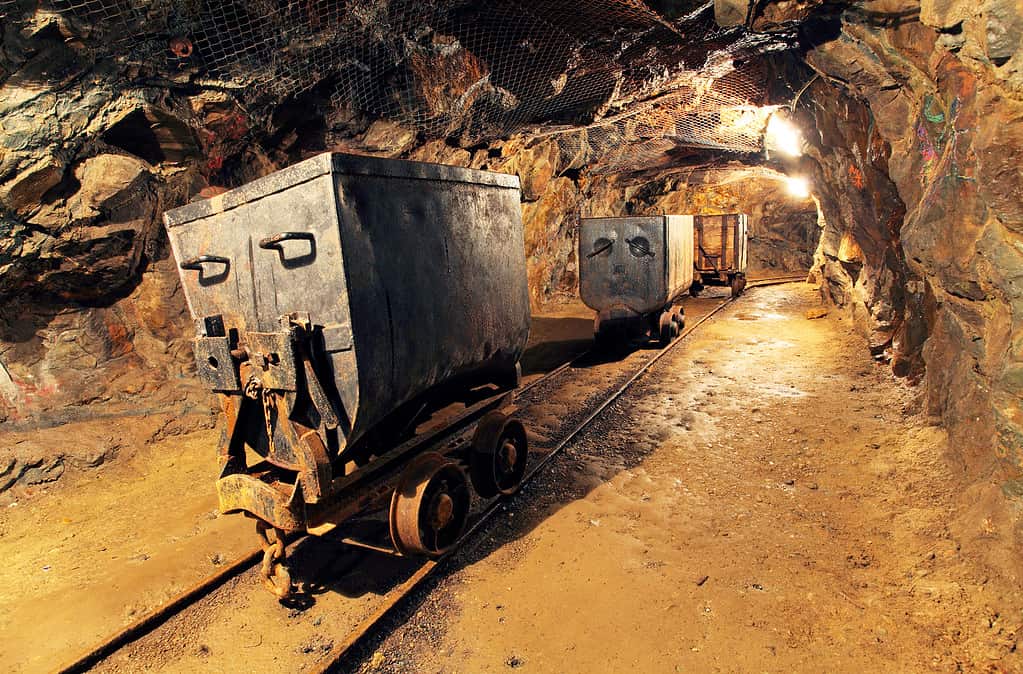
There are many activities that encompass gold ore mining, including digging, blasting, and, of course, processing.
©TTstudio/Shutterstock.com
Gold ore mining encompasses a wide range of techniques that vary depending on the deposit’s location and geologic characteristics. Common methods employed in gold ore mining include open-pit mining, underground mining, and alluvial mining. These techniques involve the excavation of tunnels, shafts, or expansive open pits to gain access to the gold-bearing ore.
The process of extracting gold ore can be intricate and multifaceted, involving a series of activities. These activities may include digging, blasting, and subsequent processing. Once the gold ore is extracted, it undergoes crushing and processing to separate the precious metal from the surrounding rock.
Scientists can use chemicals such as cyanide to dissolve the gold, enabling it to be separated from other minerals present in the ore.
How Much Gold is on Earth?

Humans have produced almost 200,000 tons of gold in history.
©esfera/Shutterstock.com
When it comes to the gold extracted from our planet, it represents only a tiny fraction compared to its total mass. Since the dawn of civilization, humans have produced an estimated 5,726,000,000 troy ounces or 196,320 U.S. tons of gold. Surprisingly, since gold is virtually indestructible, approximately 85% of this gold is still in circulation.
Despite gold being a sought-after precious metal, it constitutes just a few parts per billion of the Earth’s crust.
Although it may not exactly be practical to extract gold from the Earth’s crust, here’s a fun fact: there is an estimated one million tons of gold tucked away within the upper kilometer of the planet’s surface. Furthermore, the exact amount of gold in the core and mantle remains uncertain, but many experts believe it to surpass the quantities found in the crust by a significant margin.
In addition to gold deposits on land, there are also trace amounts of gold in the Earth’s oceans. However, the concentration of gold in the sea is extremely low, making it economically unviable to extract gold from the ocean on a large scale.
Despite our understanding of known gold reserves, there are still unexplored areas and deposits that have the potential to hold significant amounts of gold. Continued exploration and advancements in mining technologies may uncover new sources of gold in the future.
10 Countries with the Largest Gold Reserves in 2023
| Country | Gold Reserves (in tons) |
|---|---|
| United States | 8,133 |
| Germany | 3,359 |
| Italy | 2,452 |
| France | 2,436 |
| Russia | 2,299 |
| China | 1,948 |
| Switzerland | 1,040 |
| Japan | 846 |
| India | 754 |
| Netherlands | 612 |
Where is Gold Found?
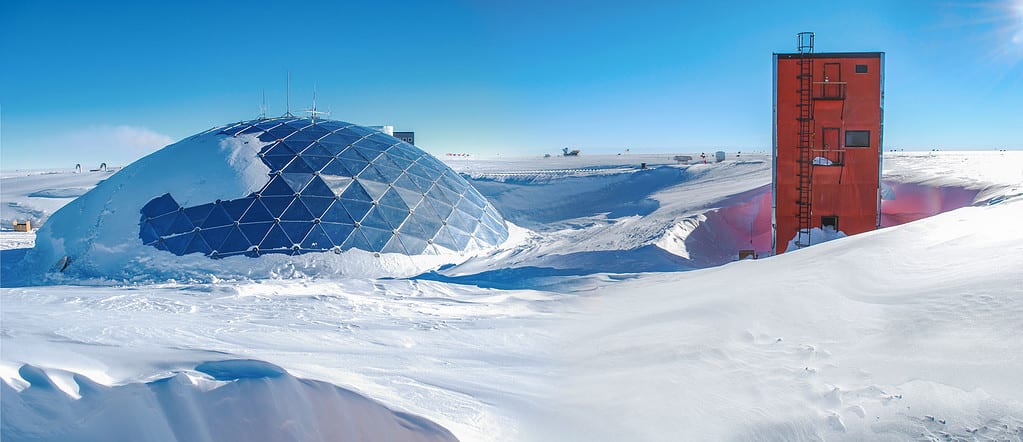
The only place in the world where humans have not found gold is in Antarctica.
©Mesa Studios/Shutterstock.com
Gold, is one of the most highly coveted metals. You can find it in various regions around the world, although certain areas possess more significant deposits than others. Some of the prominent gold-producing regions include South Africa, Australia, China, the United States, and Russia. These regions have extraordinarily vast gold mines and high levels of gold production.
Among the gold-rich areas, South Africa and India stand out with the largest known gold deposits. Specifically, Johannesburg, in South Africa, is located atop a gold-rich deposit, while India’s Kolar region boasts abundant reserves of precious metals.
Humans have discovered gold on every continent on Earth, except Antarctica. Due to the harsh environment and limited exploration activities, people have not found gold in Antarctica. However, it still remains a possibility that even beneath the dense icy expanse of Antarctica there is gold.
The Natural Forms of Gold
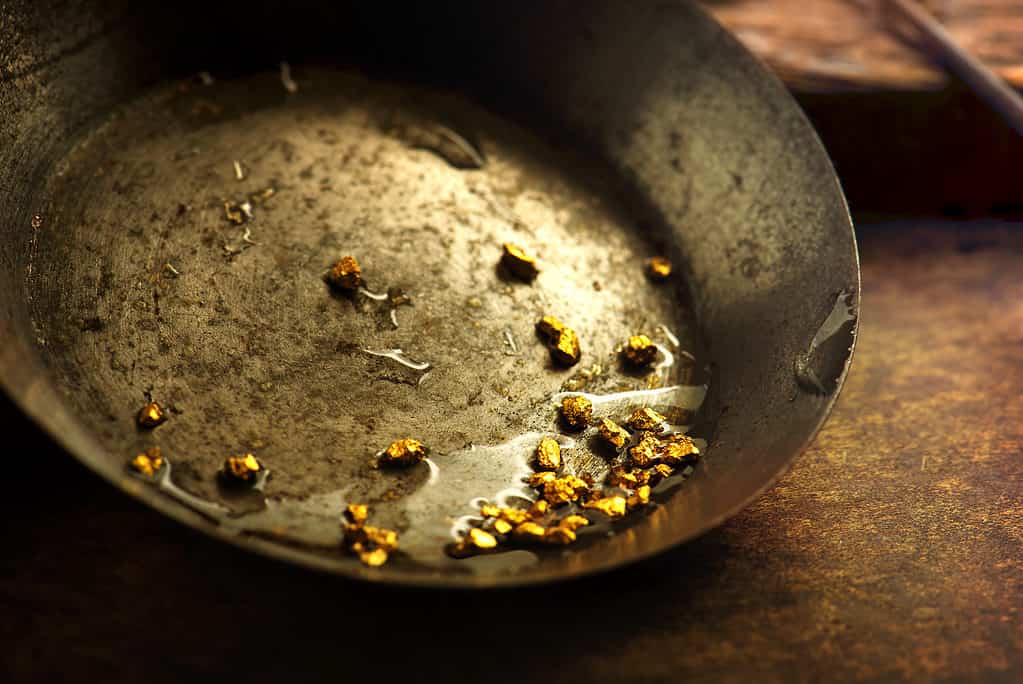
There are many different forms of gold, including alluvial, crystals, crystalline, and quartz.
©optimarc/Shutterstock.com
Gold comes in various forms, including flakes, pure native elements, and natural alloy electrum, often accompanied by silver. Erosion plays a crucial role in freeing gold from other minerals, with the heavy metal eventually settling and accumulating in alluvial deposits, stream beds, and even the ocean. Here are some of the coolest natural forms of gold.
1. Alluvial Gold
The most prevalent natural form of gold is alluvial gold. This particular form of gold is the result of nature’s forces gradually eroding it away from its original host rock. Alluvial gold is a type of placer deposit, which means it is sorted by water and is found in and around rivers and streams. This type of gold comes in a remarkable array of shapes, grades, sizes, rarities, purities, and formations, including as nuggets, chips, and picks. These unique characteristics make it a versatile and sought-after resource.
One of the qualities of high-quality placer gold nuggets is their suitability for jewelry-making. Craftsmen can transform these nuggets into stunning pieces of wearable art. Alternatively, they can serve as natural gold nuggets used in the process of alloying, blending the gold with other metals to create desirable properties.
Given its exceptional qualities, alluvial gold often commands prices that exceed the spot price of gold by at least 2 to 3 times.
2. Gold Crystals
Among the variations, gold crystal formations stand out as some of the most extraordinary specimens. These naturally crystallized nuggets exhibit the presence of one or more crystal structures within a single specimen, taking on different forms such as dihedral, woody or leaf-like, cubic, or wireline crystals. Gold crystal nuggets are extremely rare, and many consider these to be the pinnacle of precious and valuable gold.
As a result of their rarity, sellers often omit the weight of crystalline gold in their listings or price it significantly higher than the spot price of gold, reflecting its exceptional rarity.
3. Crystalline Gold
Crystalline gold nuggets represent the captivating crystalline form of this precious metal. Distinguished by their unique characteristics, you can find these nuggets near their source, detached from any accompanying host rock.
In their original unrevealed state, they may be found nested within another host rock, veins within quartz, or sinusoids. The rarity of crystal gold surpasses that of placer gold, elevating its demand and contributing to its higher price compared to spot gold (the current market price) or even placer gold nuggets.
Unlike alluvial gold, which is eroded and carried away by natural forces, crystalline gold retains its pristine form, making it a treasure of exceptional rarity.
4. Gold Quartz
Gold quartz is a fusion of natural quartz rock intertwined with visible crystalline gold, either within or outside the quartz matrix. In some extraordinary cases, you might even be able to find gold quartz within other host rocks, which only adds to its charm. The rarity of this unique combination contributes to its preciousness and the higher price it commands.
Releasing the natural gold within gold quartz specimens requires a process of crushing and processing the host rock. This extraction method reveals the crystalline gold’s magnificent beauty, showcasing its stunning presence within the quartz.
The pricing of these exceptional specimens takes into account factors such as their visual attractiveness, inherent beauty, rarity, and their location.
Uses of Gold

Of course, the most popular use of gold is to turn it into jewelry, which accounts for nearly half of all gold in 2022.
©Carolyn Franks/Shutterstock.com
Of course, you can’t talk about gold without bringing up the many various uses of this precious metal. Let’s explore the diverse uses of gold in different industries.
Jewelry (46.6%)
The jewelry industry holds the largest share of global gold demand, which accounts for 46.6% in 2022. This is roughly 2,192 metric tons of gold, highlighting its enduring popularity in creating exquisite ornaments and accessories.
Investment (23.94%)
Gold serves as a significant investment asset, making it the second-largest demand sector in 2022. Recognized for its everlasting value, gold accounted for almost one-quarter of global gold demand, with investors turning to this precious metal as a means of preserving and growing their wealth.
Central Banks (22.91%)
Central banks play a crucial role in the demand for gold, holding it as a vital part of their monetary reserves. With a share of 22.91%, gold remains a symbol of stability and a trusted store of value for these financial institutions.
Technology (6.6%)
Gold’s exceptional electrical conductivity renders it a valuable component in various technological devices. Approximately 6.6% of global gold demand in 2022 was attributed to its use in technology, including cell phones, televisions, and other electronic components that require efficient conduction of tiny electrical charges.
Dentistry
Gold’s unique properties, such as biocompatibility and durability, make it an ideal material for dental applications. It is commonly used for fillings and crowns due to its ease of insertion and longevity.
The wide-ranging applications of gold showcase its versatility as a precious metal. While jewelry remains its flagship use, gold’s exceptional properties and desirability have led to its integration into technology, dentistry, and investment sectors. Embracing both tradition and innovation, gold continues to captivate and serve humanity in a multitude of valuable ways.
The photo featured at the top of this post is © Carolyn Franks/Shutterstock.com
Thank you for reading! Have some feedback for us? Contact the AZ Animals editorial team.





